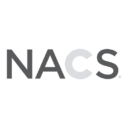
Insights
Growth Marketing Best Practices for Your Hotel
The hospitality industry has had to dramatically shift its marketing focus since the start of the pandemic, adapting to forces that would have been inconceivable before 2020. Those hospitality merchants who had previously implemented solid growth marketing programs prior to COVID-19 were in the best position to respond to and adapt their approach to the shift in demand that the pandemic presented— however, late adopters of the growth marketing approach can still implement best practices in intelligent ways to capitalize on a target demographic that they may be missing.
A growth marketing approach differs from traditional marketing in that it focuses on trying to condense the growth period into engaging and gaining as many consumers as possible as soon as the campaign is released. With the rapid-shifting guidance around COVID-19 and travel advisories, the trends that were always considered to be cornerstones of traditional marketing are no longer reliable. Instead, growth marketing can be leveraged as a more reliable way to focus on quick and methodical gathering of data. By looking into what patterns emerge from the data captured in your campaigns, you can see trends begin to emerge that reveal the rapid shifts taking place in the industry.
Bill Peeler, Senior Consultant with W. Capra, expands on the importance of data collection— “It’s essential for merchants to look at the demographics of who’s coming back into their hotels, who’s not returning for visits as fast, and what are the reasons that they cite for their hesitancy to return. Once you know this, you’ll have a better idea of how to incentivize them to return in a meaningful way.”
Best practices across the most successful growth marketing strategies currently in play in the hospitality industry include a strong focus on safety and hygiene procedures. Additionally, many hotels are leveraging VR technology to provide virtual views and tours of hotel facilities for prospective group business that is still unable or not quite comfortable with on-site visits. In addition to promoting an image of “clean”, many hoteliers are focusing more on user generated content than ever before, allowing consumers themselves to participate in and validate this new image.
When instituting new growth marketing tactics, it’s important to recognize that travel has, in some ways, forever evolved. “More people are working from home than ever before. We have yet to see the true effect of the pandemic on business travel,” Peeler adds. “Marketers need to be creative, and deploy a strong data science capability to look at their consumer base and marketing strategies; for instance, data could indicate that out-of-town travel is low and strategies need to be rolled out to ensure that they highlight local segments and leisure travel as revenue streams that cannot be overlooked.”
Your data may point you to a ‘staycation’ strategy for local guests who have been cooped up in their homes, saving money on travel— it may show that you should allow your loyalty members to hold status longer and upgrade faster, or it may even reveal that your guests would prefer more natural or green elements incorporated into physical common areas. Regardless, it’s essential that your marketing tactics enable your organization to gather, and respond to, the needs of your guests. W. Capra works with their clients to review all programs in place and uses the underlying data to help reshape those programs for maximum potential.
W. Capra is passionate about assisting our clients with all things digital commerce. For further inquiries, please reach out to [email protected].
Related Insights
CSP Magazine – What C-Store Retailers Need to Do to Succeed in 2025
This article, by W. Capra’s Tom Newbould as a guest author, was published in the February 2025 edition of CSP […]
How Seamless is Your Customer Journey?
A seamless customer journey starts with an honest assessment of your operations. Most retailers know they need to create value […]
What’s In Store for Retail: Industry Trends to Watch
As uncertainty around the state of the economy lingers due to inflation, retailers need to be thinking about how they […]
Turn Your Customer-First Mantra Into Strategic Action
Retailers have been saying it for years, “We need to put the customer at the center of everything we do.” […]
Want to stay in touch? Subscribe to the Newsletter










